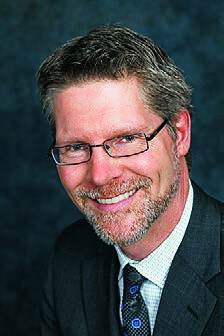
Summer marks the halfway point of the calendar year, and, at AME BC, it marks the halfway point of the Association’s 2013-2017 Strategic Plan and Objectives, the guiding-principles-based document and mandate for AME BC . Given the challenging times that our members are facing, this is a good time to reflect on the Association’s achievements and what more could be accomplished. Many of you may recall that the Strategic Plan was developed with input from hundreds of members – through in-person interviews, focus groups and a survey of delegates that attended AME BC’s Mineral Exploration Roundup 2012 conference. With the support of AME BC members, we have continued to work as the advocate for a successful and responsible mineral exploration and development industry based in B.C. and operating around the world. AME BC’s Strategic Plan focuses on six key priority areas that shape our industry advocacy work. I am pleased to report the following progress specific to those priority areas.
Successful Exploration
Mineral exploration and development require public policies and infrastructure that encourage, facilitate and support a successful industry. As a result of AME BC’s advocacy, leadership and partnership work, the provincial government committed to a $6.3-million increase to the base funding of the B.C. Mines and Mineral Resources Division – bringing it up to $17.1 million – as well as extending the $10-million B.C. mining flow-through share tax credit through December 31, 2015. On top of this, the federal government extended the Mineral Exploration Tax Credit through March 2016 and expanded the eligibility of Canadian exploration expenses to include environmental studies and community consultation expenses incurred after February 2015. An Ernst & Young study conducted in 2013 for AME BC found that the average consultation costs borne by representative companies as a percentage of their total exploration expenditures in 2012 were estimated at over 21 per cent. And a recent study by the Prospectors and Developers Association of Canada (PDAC) found that 72 per cent of exploration stage financing from 2012 through 2014 was from flow-through shares that are made possible by the Mineral Exploration Tax Credit.
AME BC continues to advocate on its members’ behalf in areas such as land access and use, long-term funding for public geoscience and other incentives that will assist the industry, both now and when market conditions improve.
Aboriginal Relations and Engagement
This past May, we released the revised edition of AME BC’s popular Aboriginal Engagement Guidebook. The revisions include guidance on the Supreme Court of Canada’s Tsilhqot’in and Grassy Narrows decisions. We are optimistic that these decisions, together with our members’ efforts to engage Aboriginal communities respectfully and regularly, will increase certainty for the mineral exploration and development sector and drive future investment that will create lasting opportunities to benefit everyone. We have many positive examples in B.C. to showcase successful engagement between Aboriginal communities and the mineral exploration and development industry.
Public Awareness and Stakeholder Education: AME BC continues to actively raise public awareness about the need for the industry to discover and develop the metal, mineral and coal deposits that ultimately provide the basic commodities necessary for modern life. Throughout the spring, AME BC co-hosted the successful Mining Week Community Fair with MineralsEd and participated in local government conferences around the province to raise the profile of the industry and answer questions about mineral exploration and development from elected officials. AME BC is also funding the outreach of regional exploration groups throughout the province as well to facilitate their efforts in engaging local communities.
Socially Responsible Exploration
This summer issue of Mineral Exploration highlights the excellent work of AME BC’s Corporate Social Responsibility (CSR) committee in sharing information about cost- effective ways that companies can use CSR to add value to their properties. This issue also highlights the annual environment, health and safety survey that AME BC does in conjunction with the PDAC. Although the culture of safety within the mineral exploration and development industry has grown substantially in recent years, we can always improve. For example, all AME BC committee meetings now include a safety discussion, and we encourage all AME BC members to do the same – whether they are having a meeting in the office or in the field.
Membership Engagement
With thousands of individual and corporate members, AME BC has a strong, experienced and engaged membership. This issue of Mineral Exploration features our 48th annual Buyers Guide that showcases our corporate members. Our staff and volunteers have connected with members at the PDAC, Kamloops Exploration Group and Minerals North conferences, and we are looking at how we can improve the membership experience and communications through AME BC News, Mineral Exploration magazine, AME BC Speaker Series events, our awards program, the annual Charity Golf Tournament and other membership- focused initiatives and events.
Mineral Exploration Roundup
AME BC ’s Mineral Exploration Roundup conference is the Association’s signature event. Accordingly, plans are well underway for Mineral Exploration Roundup 2016, “Innovation in Exploration,” to be held from January 25 to 28 under the Canada Place sails at Vancouver Convention Centre East. This coming Roundup will coincide with Cambridge House’s Vancouver Resource Investment Conference, which will allow for respective conference delegates to attend both events. On behalf of the staff and board of AME BC, I thank you for your support of the Association as we strategically focus on key priority areas and advocacy work that builds a successful mineral exploration and development industry based in B.C. I also wish you a safe day, every day, wherever this message finds you!
